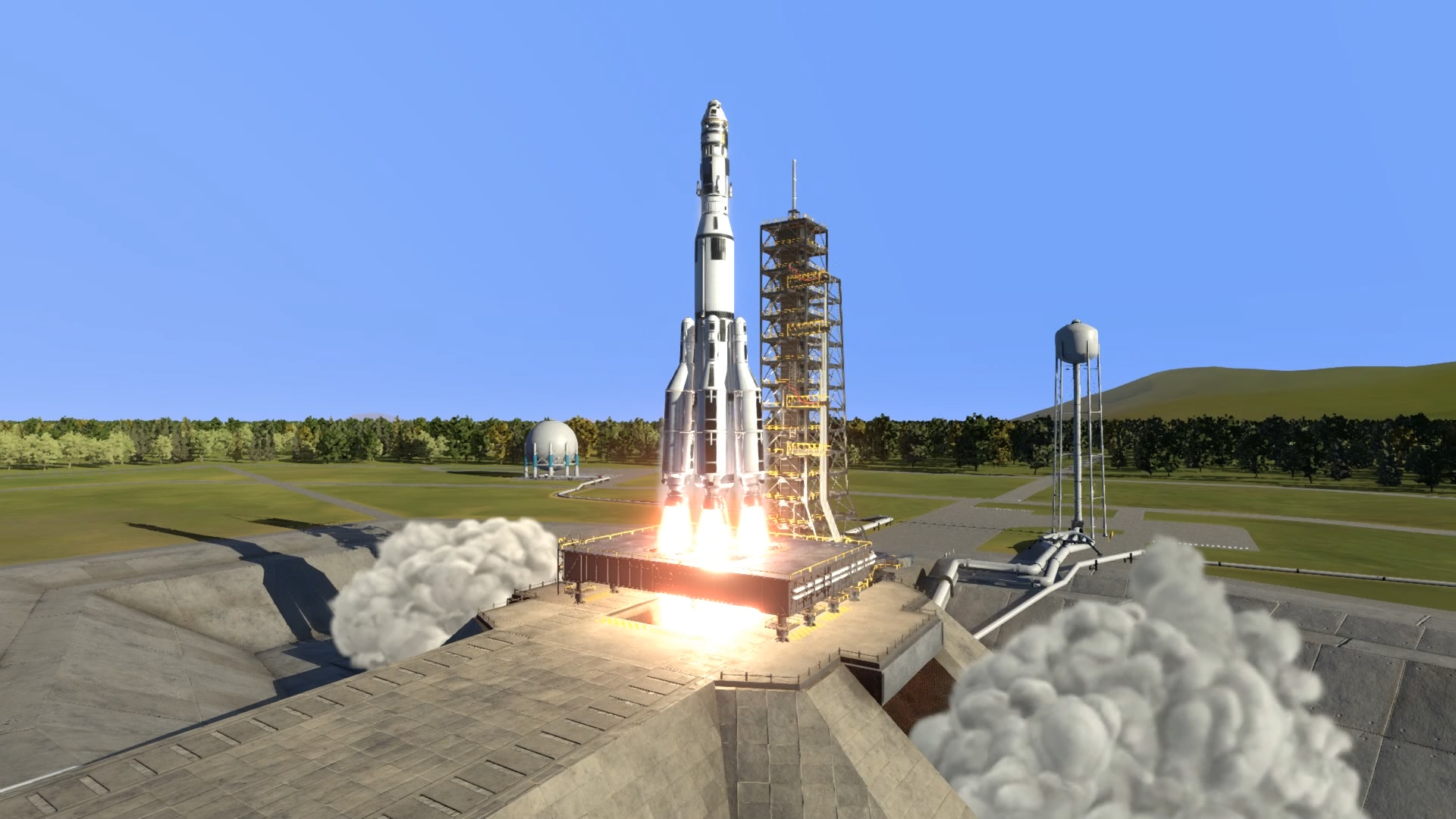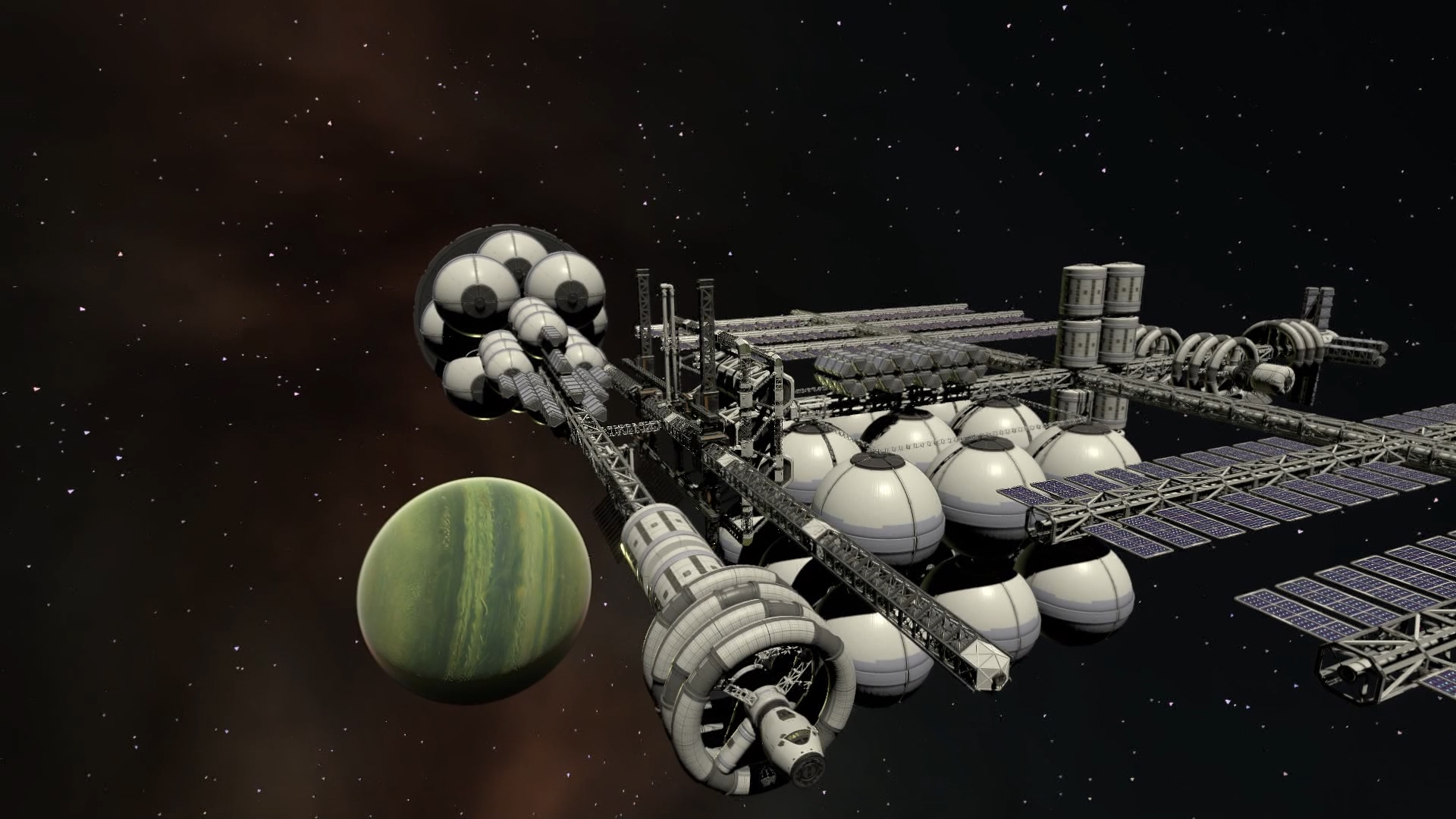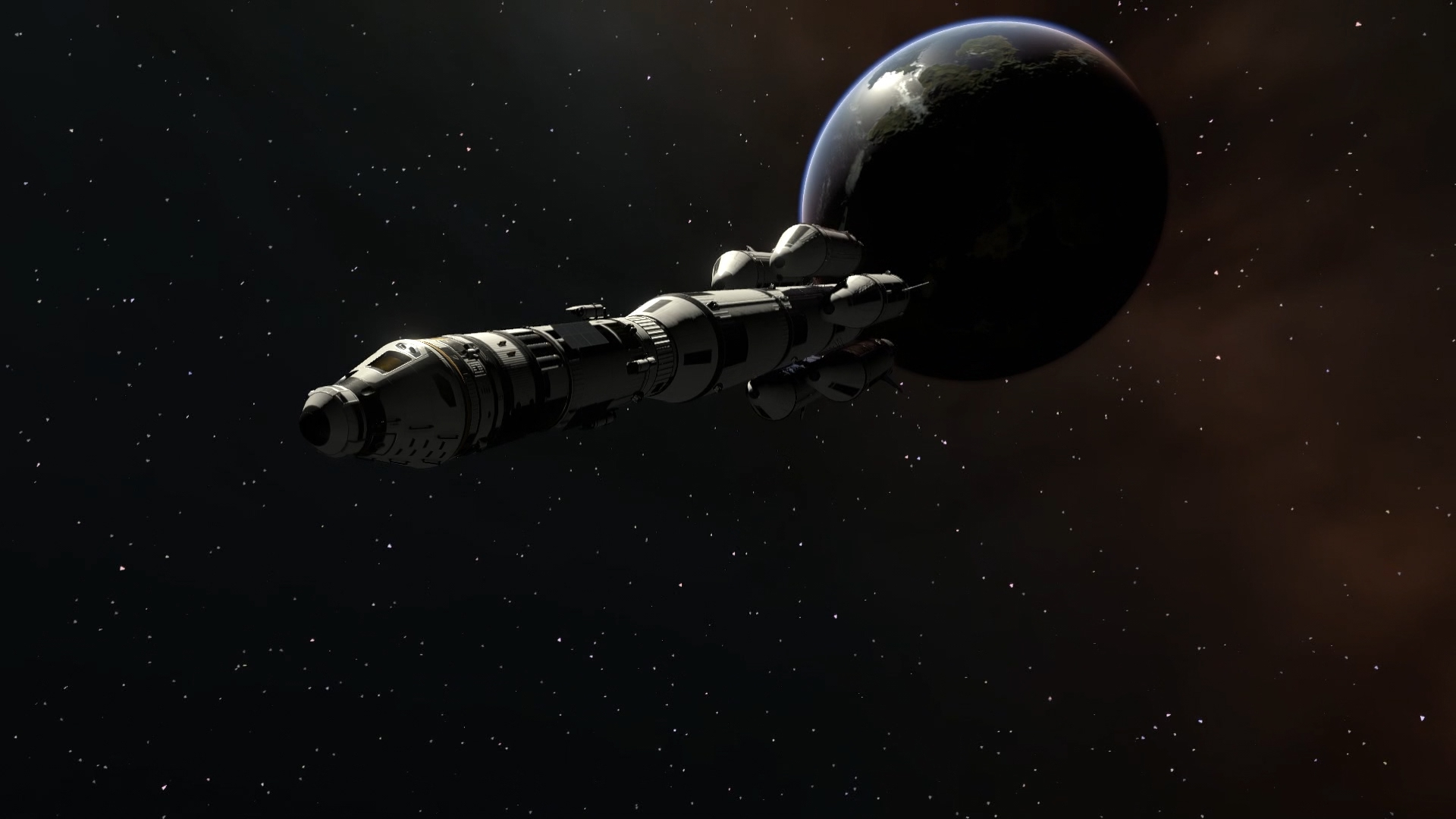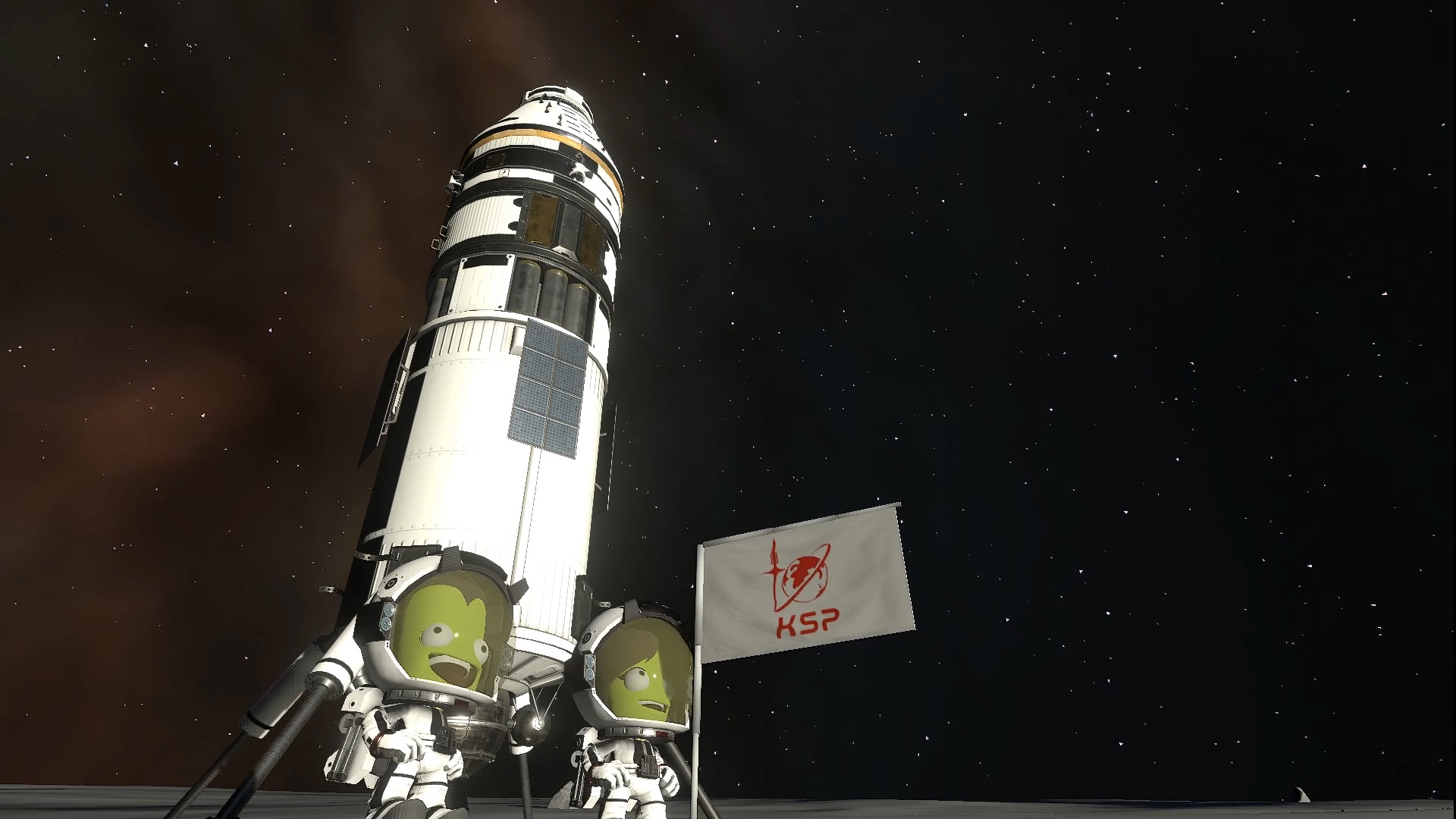Kerbal Space Program 2's new devs on adding interstellar flight, colonies and more to the PC's greatest space sim
Star Theory's creative director explains what's new in Kerbal Space Program's sequel.

Just a few minutes into my chat with Nate Simpson, creative director of the newly announced Kerbal Space Program 2, we're talking about what happens when rockets blow up. "That's actually my favourite part to work on," he says. "We want the explosions to be a little bit more relevant to the contents of the individual parts that are being destroyed. Our goal is for every explosion to be a snowflake … The explosions have gotten very exciting."
Kerbal Space Program 2's big new features are all things that expand the scope of what you can do out among the stars, starting with interstellar travel.
Simpson has an obvious love for Kerbal Space Program, a fantastic space sim, and an understanding of what made the original game so entertaining. Our explosion tangent came from a discussion about the ways Kerbal Space Program 2 will help new players learn the game. "It was very, very important to us not to make the game easier," he says. "This is a universe of physical laws, and they are unforgiving laws."
And unforgiving laws lead, inevitably, to explosions.
Kerbal Space Program was always a game about experimentation and failure, and it's reassuring that Simpson plans to keep it that way. Squad, the original developer, isn't working on this sequel. Instead, Simpson leads the development team at Star Theory Games—formerly Uber Entertainment, who made the Monday Night Combat series and Planetary Annihilation.
"Squad, of course, has done a great job growing this game over many, many years," says Michael Cook, executive producer at Private Division. "But as you know, Squad is a small development team, and so in the interest of being able to continue bringing awesome new content to fans of the current game—as well as starting work in parallel on what the next phase of Kerbal Space Program would look like—it made sense to bring in another group of folks who were just as much fans and skilled at bringing that vision to life in a new way."
"We've been checking in on Squad now and then to make sure that what we're doing is, you know, true to the spirit of the original game," says Simpson, who lists discussion topics ranging from the pronunciation of Mun to the relative size of Jeb's eyes. "We've really gotten into some detail and really sort of got into the weeds around a lot of stuff … We're huge fans of them and longtime fans of the game. I'm a couple thousand hours into the game. I know those guys from the forums and it's been sort of a surreal and exciting experience to talk to them about what we're doing."

Star Theory is especially trying to improve the experience for new players. "As an evangelist for the game," says Simpson, "I probably pitched it to a dozen friends and often the way it goes is they make an honest attempt, and they kind of bounce off the jargon. They bounce off the the physical difficulty of the game."
Keep up to date with the most important stories and the best deals, as picked by the PC Gamer team.
New animations-based tutorials will help players visualise the core concepts of the science Kerbal depicts. This feels like a sensible way to explain some of the intricacies of rocket physics. Through trial, error and, yes, explosions, I've built up an intuitive grasp of how to make rockets go to space, but I still couldn't explain what delta-v actually is. Simpson says that through user testing, they've found the basic science isn't impossible for people to pick up. It's how that information is taught that determines "whether or not a person feels hopeless."
The final frontier
It's important to get players through that first hurdle, because Kerbal Space Program 2's big new features are all things that expand the scope of what you can do out among the stars, starting with interstellar travel. "You start at our new Kerbal Space Center, which is actually at the same location on Kerbin as it was in the original game," explains Simpson. "And then all the planets in the Kerbolar system continue to be present in enhanced forms. And then, as you continue to progress up the tech tree and get access to interstellar technologies, the scope of the game just gets larger, and you begin crossing the gulfs of interstellar space."

Touting an improved terrain system, Star Theory wants players to feel like every location is special in some way. "We really want each location to feel like a unique discovery that you'd feel like screenshotting and sharing with people, and—if it's an interesting spot—maybe other people would also attempt to find that place in their local games," says Simpson. "I'm pretty excited about the results we've been getting out of that system. And there are lots of emergent kind of happy accidents that come out of that."
Simpson describes KSP2 as the 'Yes, and…' version of the original game, but the Star Theory team still wants to retain Kerbal's scientific grounding. "We made a document very early in the project that was like, here's the things we don't do in Kerbal Space Program. We don't do warp gates, we don't do warp drive, we don't do magic technology. And we've really been in close contact with a number of subject matter experts in propulsion, and in astronomy, to make sure that the things we're adding to this game are rooted in real science.
"Obviously, when you're talking about a game that gets into future speculative technologies, there's going to be a certain amount of invention that's happening, and it is, after all a game," he says. Simpson references Atomic Rockets, a hard sci-fi website that digs into the possibilities of future rocket tech, as one of the "coolest websites on the internet." Their goal for Kerbal 2, when it comes to interstellar travel, is for "each of these new propulsion technologies to tell a meaningful story, to talk about something that's rooted in real scientific research."

That's not to say Kerbal's idiosyncratic charm won't be in effect. "We also know that our players get pretty excited about some of the whimsy that is added with Kerbals and things like the Kraken that have now become legend within this universe," says Cook, "that add some flavour to that real science."
As for how you build a ship that supports interstellar travel, that's where another of Kerbal Space Program 2's new features comes in: Colonies. Players will be able to transport deflated portable modules to new planets—think The Martian's HAB—and deploy them on the surface, or even while in orbit.
Space race
"As your colonies progress—as their population increases—they begin to build new modules using either locally available resources or resources that you brought to them," explains Simpson. "And when they reach a certain point of maturity, you can build a new VAB at the colony. And at that point, you have a proper beachhead—you're now outside of the gravity well of Kerbin. That unlocks, especially in the case of orbital colonies, some truly exciting possibilities."
Interstellar ships will need to big—"like skyscraper big," says Simpson—which is a much easier task when you're constructing without, for instance, gravity getting in the way.

Colonies, like everything in Kerbal, will invite failure in other ways.
Despite the talk of population, Simpson is keen to point out that Kerbal Space Program isn't space SimCity. "There is a population of Kerbals locally in any colony that you build, and that population does increase organically. And as that population increases, the colony's abilities increase as well. But not it's not the sort of situation where if you don't tend to the colony, it collapses or something bad happens."
In many respects it feels like an expanded version of how I played the first game—lots of ongoing projects to be advanced or ignored depending on my current whim (and many, many stranded Kerbals waiting patiently to be rescued). "If you want to continue to come back to the colony and add to it you can," Simpson continues. "Or, if you got what you need out of it and you want to move on, you can do that as well. It's not meant to be a punitive or distracting system."
Colonies, like everything in Kerbal, will invite failure in other ways. The colony builder will—much like the vehicle editor—allow you to create some outlandish structures. But once you exit from the editor, reality (and, on planets, gravity) will kick in. "There can be a Tower of Goo aspect to it," says Simpson. "I'm very excited to see what the community does in their attempts to make weird structures … We've had a lot of fun building on mountain peaks or building on the edges of craters or building on the edges of canyons. The new terrain system unlocks a huge amount of potential variation in the colony types."

Simpson is less forthcoming on KSP2's third major addition: multiplayer. "All I can say about multiplayer right now is that it is true to the spirit of the original Kerbal Space Program," he says, cryptically, "and there will be more information to come." Also teased is mod support, with Simpson saying Star Theory has "exposed significantly more core functionality to modders." While no details were given, Simpson recognises the importance of mods to the original game's popularity. "We're very, very excited about what will be possible going forward. Because we feel like the modders are kind of the beating heart of the Kerbal community."
Kerbal Space Program is an unusual proposition as the sequel to a well-supported, ongoing sandbox game—one being made by a new development team. Many of the new features sound exciting, and their implementation seems true to the development philosophies of the original. Kerbal Space Program was always more than just a feature list, though—its magic lay somewhere between theme and execution. But Simpson has been to the Mun and back, which hopefully means his team understands the inherent magic that made Kerbal Space Program one of our highest rated games of all time.
Kerbal Space Program 2 is due out on Steam in spring 2020.

Phil has been writing for PC Gamer for nearly a decade, starting out as a freelance writer covering everything from free games to MMOs. He eventually joined full-time as a news writer, before moving to the magazine to review immersive sims, RPGs and Hitman games. Now he leads PC Gamer's UK team, but still sometimes finds the time to write about his ongoing obsessions with Destiny 2, GTA Online and Apex Legends. When he's not levelling up battle passes, he's checking out the latest tactics game or dipping back into Guild Wars 2. He's largely responsible for the whole Tub Geralt thing, but still isn't sorry.

